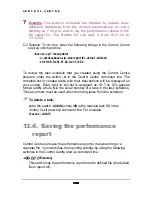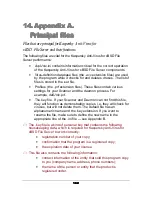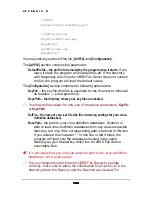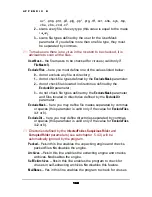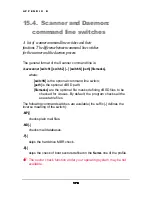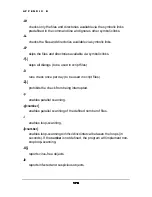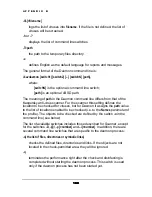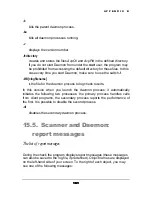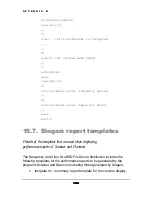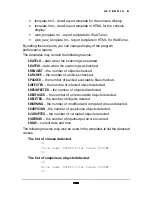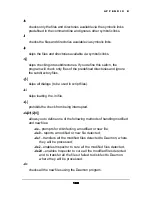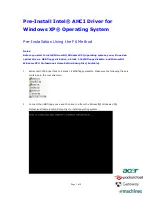
A P P E N D I X B
174
174
174
174
The
[ActionWithCorrupted]
section parameters define the actions to be taken
by the program when it detects corrupted objects.
CorruptedCopy
–
Yes
in this line enables the program to copy
corrupted files to a separate folder that must be defined in the
CorruptedFolde
r
line.
No
disables this feature.
CorruptedFolder
– the name of the folder for corrupted copies (valid
only if
CorruptedCopy=Yes
). The default folder is
corrupted
.
!"
If you prefix the name with the character "
~
", the directory will be
created in your home directory.
The
CopyWithPaths
,
ChangeExt
,
NewExtension
,
ChownTo
and
ChModTo
lines in the
[ActionWithSuspicion]
section and their features are similar to
those (with the same names) described for the infected files..
The
[Tempfiles]
section parameters define settings for the program’s
temporary files:
UseMemoryFiles
–
Yes
in this line enables the program to create
temporary files in the memory (but not on your hard disk). Type
No
to create temporary files on the hard disk.
LimitForMemFiles
– the maximum size (in Kb) of temporary files to be
created in the memory (valid only if
UseMemoryFiles=Yes)
. For
example, if
LimitForMemFiles=3000,
temporary files exceeding this
size will be created on the hard drive.
MemFilesMaxSize
– the maximum size (in Kb) of files to be extracted in
the memory (valid only if
UseMemoryFiles=Yes)
. For example, if
MemFilesMaxSize=2000
and the file, while being extracted from its
archive, exceeds this value, the program will stop extracting it
into the memory and start generating this temporary file on the
hard disk.
TempPath
– the directory for temporary files to be created on the hard
disk. The default directory is
/tmp
.
The
[Priority]
section parameters allow optimization of loading of the
Daemon process.
Father
– the priority of the parent process.
Child
– the priority of the child process (this process implements the
check request).

